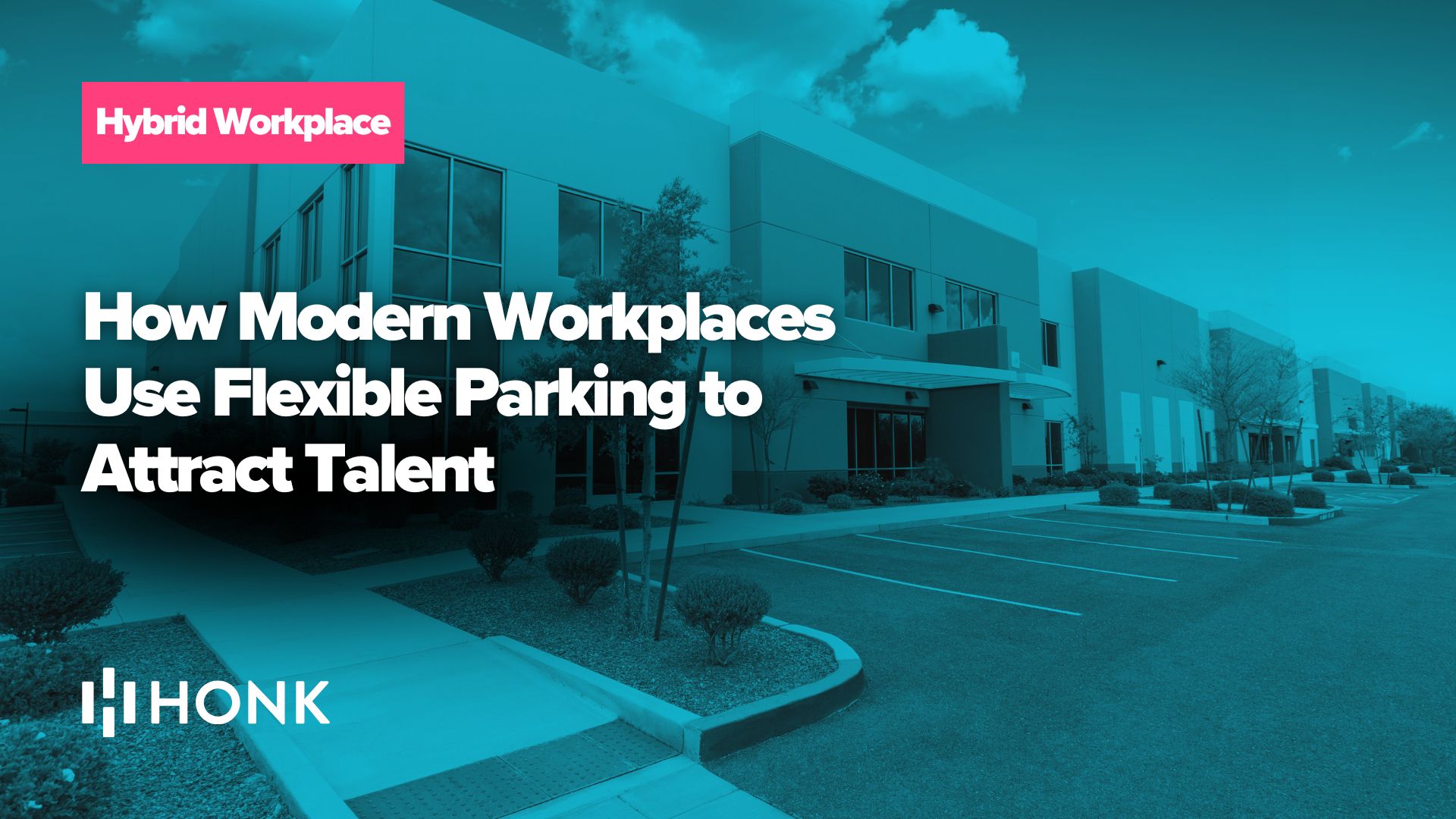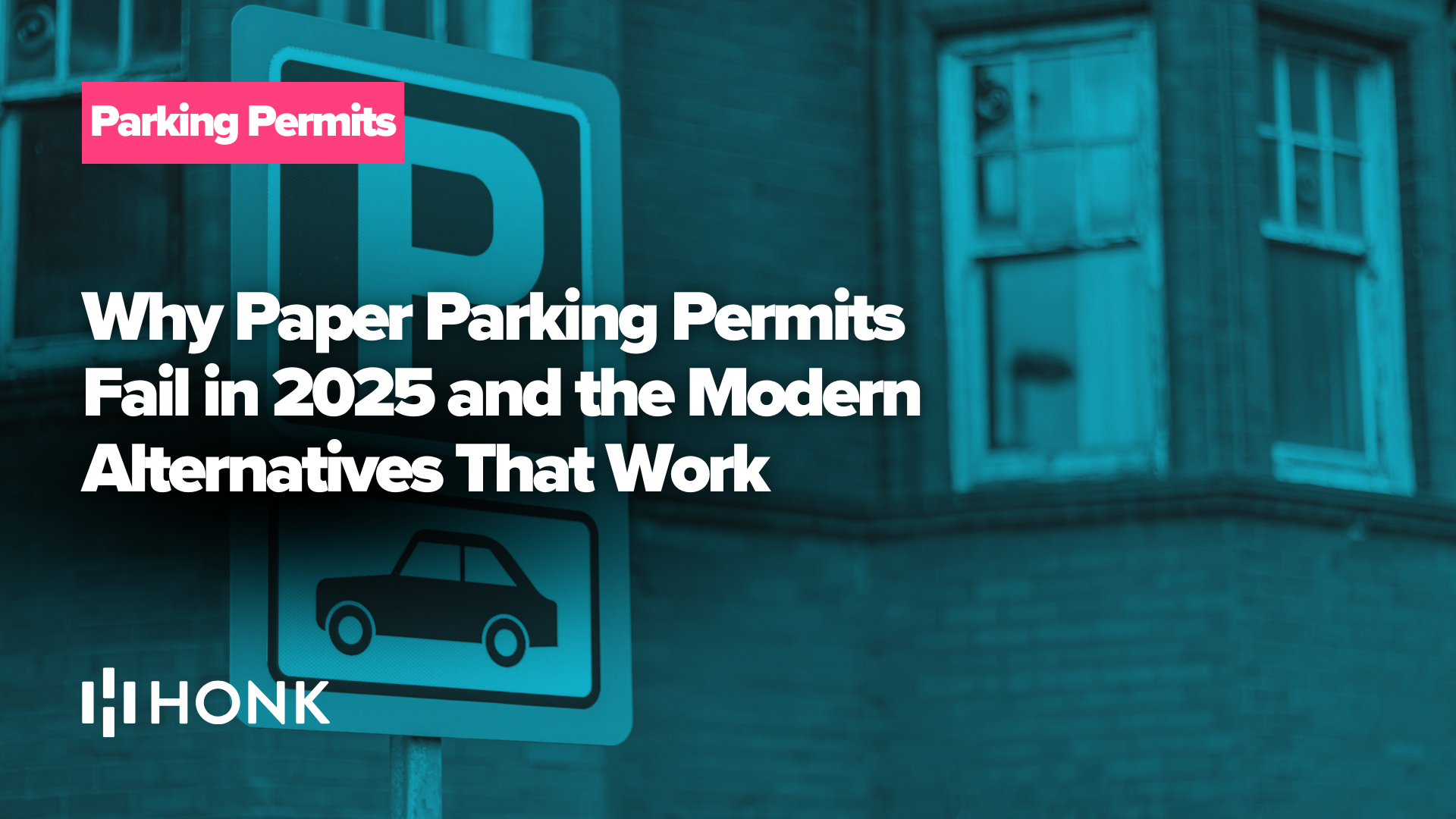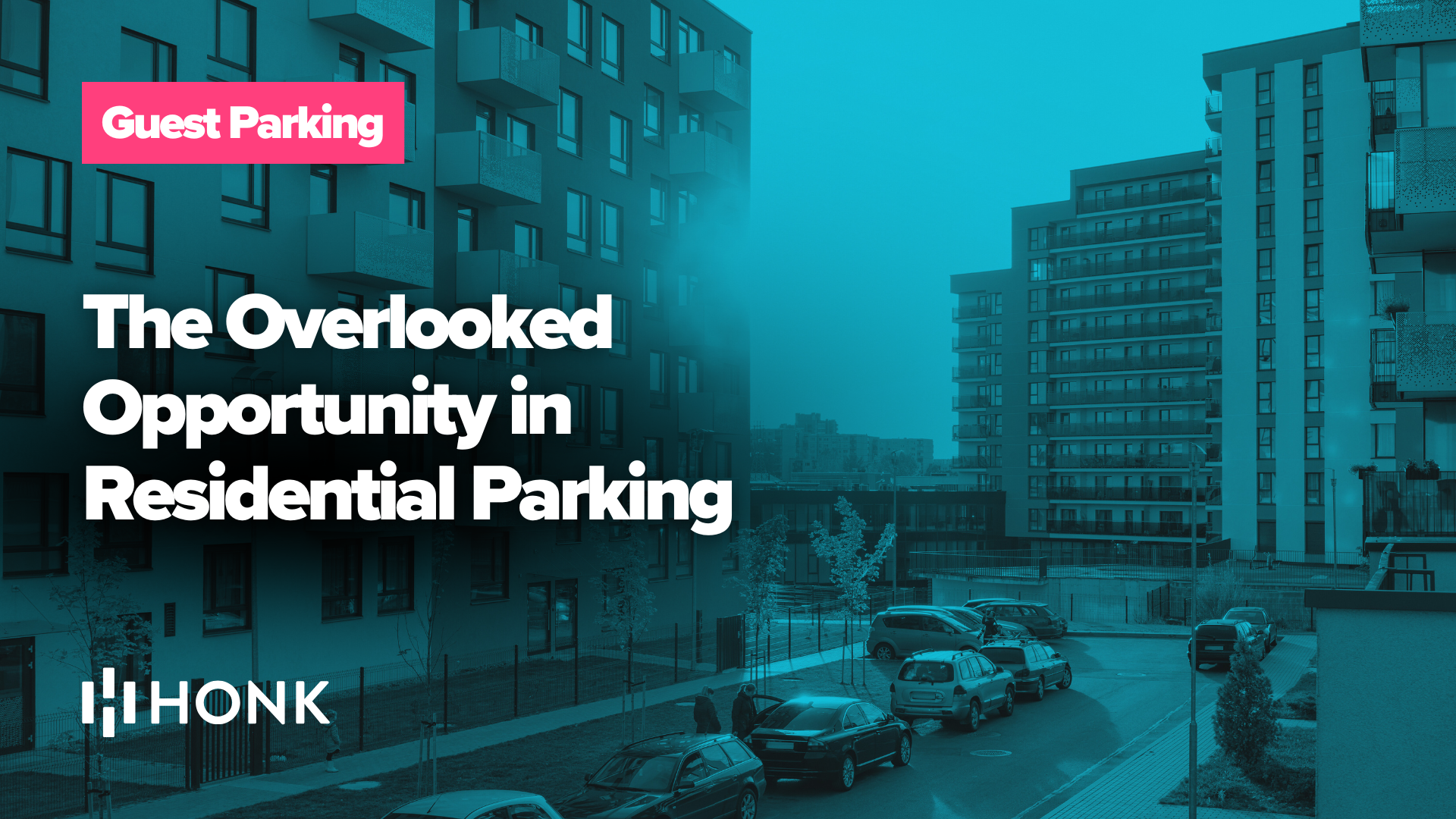At HONK, we live and breathe the realities of curb and facility management. Every day we hear from municipal leaders, universities, and private operators who are trying to balance three things that are often in tension: reliable access for drivers, healthy turnover for businesses, and sustainable revenue and operating performance for the organization. The pain points are familiar—drivers circling for blocks at peak times, quiet curb space that sits empty off-peak, garages that are under-utilized while the curb is jammed, and a public conversation that too often becomes a debate about fairness instead of a plan for access. The truth is that most parking systems are not suffering from a permanent scarcity problem; they are suffering from a timing and distribution problem.
Dynamic pricing is how we fix that. By aligning price with demand in a structured, transparent way, we help our partners make sure there is almost always a space available when and where it’s needed. When availability is predictable, search time drops, curb chaos subsides, and the same assets serve more trips in the same number of hours. With the right safeguards, dynamic pricing is not a revenue grab and not a surprise for drivers. It’s a management tool—one that our platform makes practical to plan, operate, and explain. If you want a quick primer on how we think about it inside our software, our post on moving from static rates to dynamic pricing is a good place to start.
Why does this matter now? Because the expectations placed on the curb are higher than ever. Freight, TNCs, micro-mobility, dining patios, events, and deliveries all compete with visitors and employees. Meanwhile, budgets are tight and communities are asking for less congestion and cleaner air. Waiting for more supply is not a strategy. Managing the supply we already have—intelligently, with data and clear policy—is the fastest way to make progress that drivers, merchants, and residents actually feel.
Why static pricing holds back performance
For decades, parking rates have been set and forgotten. A meter might cost the same on Tuesday at 10:00 a.m. as it does on Saturday at 7:00 p.m. A garage might post one all-day price regardless of whether there is a convention next door or a lull in activity. That kind of simplicity feels fair, but it ignores the basic economics of the curb: demand changes block by block and hour by hour. When a price is blind to that reality, two predictable outcomes follow. First, saturation at the times and places everyone wants, which leads to circling, double-parking, and spillover into nearby neighborhoods. Second, empty capacity off-peak, which is a missed opportunity for nearby businesses and a drag on operator revenue.
Static pricing also creates operational friction. Enforcement becomes a blunt instrument to control dwell time, and it rarely produces the customer experience anyone wants. Flat rates make it hard to coordinate curb and garage assets, so longer stays end up occupying the most valuable curb space while garages sit below potential. And because rates are not tied to performance, operators lack a feedback loop: there is no mechanism to learn whether a change improved access or made it worse.
The data to manage this better is already available. With digital payments, license plate recognition, and transaction telemetry, we can see occupancy patterns with enough resolution to act. We built our analytics to turn that raw information into insight—what’s full, what’s empty, and what’s out of balance—so operators can set prices with intent. If you want to see how we turn data into operational decisions, our look at parking analytics explains the approach.
What dynamic pricing means at HONK
When we say dynamic pricing, we do not mean constant changes that surprise drivers or surge-style spikes. We mean a governed, data-driven process that moves rates up or down within clear bounds to keep occupancy in a healthy range—typically around 70 to 85 percent. In that band, the curb is well used, but not saturated, and drivers can usually find a space without circling. Our role is to give your team the software and guardrails to make that happen consistently, and the communication tools to make it easy for drivers to understand.
There are several ways our partners implement this in practice. Some begin with time-of-day pricing: predictable increases during lunchtime or evening peaks, with lower rates during quieter windows. Others add event-based pricing for concert nights, games, graduations, or festivals, so surges are managed with advance notice rather than last-minute lineups. As confidence grows, many move to periodic occupancy-based adjustments. In that model, we look at the observed utilization and dwell time in each zone and daypart, then propose measured adjustments within your caps and floors. The cadence is intentional—monthly or quarterly reviews are common, with the option to freeze or roll back a change when policy or context requires it.
There’s also an important design choice in how curb and garages relate to each other. The curb serves best as the front door for quick visits and frequent turnover; garages shine when longer stays are priced attractively. We make that distinction intuitive at the moment of decision. Inside the HONK app experience, drivers see the current rate before they start a session and can compare nearby options. When the curb is busy, a garage recommendation with a better long-stay value is surfaced. When the curb is quiet, lower off-peak rates encourage visits that might otherwise be priced out. The logic is simple: use price to put the right trip in the right place at the right time.
Availability first, revenue second
We will always measure revenue—it matters for every operator—but we design dynamic pricing around availability. Drivers care more about finding a space quickly than about saving a small amount, and merchants care more about turnover than about a specific price point that leaves their curb perpetually full. When rates maintain availability, everyone benefits: search time drops, delivery trucks have fewer illegal stops, and the system becomes easier to use.
This principle also helps focus internal conversations. If the shared goal is that most blocks should have one or two open spaces at peak, then price becomes a tool to hit that goal, not an end in itself. It clarifies what success looks like and makes tradeoffs explicit. For instance, if a district is consistently above the target range at lunch, modest increases there can be paired with off-peak reductions that lower the average cost across the day. Conversely, if a zone is empty in the evening, prices can fall to activate the street and support restaurants and entertainment without subsidizing the peak.
What drivers experience
If we design the system correctly, drivers notice two things. First, they can usually find a spot when they need one. Second, they understand the price before they commit and feel they had a choice. Everything else should fade into the background. We obsess over these details because trust is earned or lost in seconds at the curb. Inside our product, we show the price plainly, signal when an event rate applies, and provide alternatives nearby. We do not surprise people with hidden fees, and we give them a simple way to extend a session from their phone when plans change. These experience choices matter: they reduce disputes, reduce violations, and make enforcement a backstop—not the primary tool for managing behavior.
What businesses experience
For merchants and institutions, dynamic pricing is a reliability story. When turnover improves during the hours that matter—lunch for retail, evenings for entertainment, move-in days for campuses—the curb fulfills its purpose as a front door. Deliveries that used to double-park can find legitimate space. Customers who might have abandoned a trip because of circling complete the last fifty feet. When our partners share those access outcomes with local business associations, support tends to follow, because the system is tuned to the health of the district rather than frozen in a pattern that privileges long stays at the expense of short visits.
What operators experience
For the staff actually running parking, dynamic pricing reduces uncertainty. With HONK’s control center, you define your rules—floors, caps, change cadence, and exception calendars—and the platform enforces them. You can preview the impact of candidate rate changes before you publish them, examine how occupancy and dwell time are shifting, and coordinate curb and garage strategies so assets complement each other. If you’re exploring how these tools fit together, our post on smart parking solutions and ROI walks through the broader picture.
All of this is wrapped in clear communication. We publish change logs, support straightforward public messaging, and help you create FAQ language that explains what you’re doing and why. That transparency lowers the temperature of the conversation. People can debate the policy, but they are not confused by the mechanics.
Equity and accessibility by design
Pricing the curb raises understandable questions about fairness. We take those questions seriously. A well-designed program should protect access for people who need it most and avoid pushing unwanted activity into adjacent neighborhoods. There are several ways to do that without weakening the core goal of availability. Discounted permits for qualifying residents and low-income drivers can help preserve access near essential services. ADA exemptions remain non-negotiable. Business-funded validations can support short visits in key corridors without undercutting turnover. And as zones are defined, it is important to monitor for spillover effects and adjust boundaries so pressure is not simply exported down the block.
There is another fairness angle that often gets overlooked. A perpetually full curb benefits those who show up first and stay longest. Everyone else is priced out by time, not by money, because there is nothing to buy at any price. Availability is a form of equity. When people can reliably find a space for a short visit at the time they need it, access is shared more broadly across the day. We shape our pricing tools around that belief.
Environmental gains that show up in traffic, not just spreadsheets
Congestion is not just frustrating; it has a measurable environmental cost. When drivers circle for parking, they add vehicle miles traveled, burn fuel, and generate noise and emissions in the very places where cities want calmer streets. Dynamic pricing reduces that waste by cutting the search phase of a trip. Because the effect is distributed across thousands of decisions each day, it shows up in small but meaningful ways: fewer mid-block stops, fewer last-second lane changes to chase an opening, fewer delivery trucks idling in travel lanes while a driver hunts for coins or QR codes. These are practical, immediately visible wins that complement long-term investments in transit and active mobility.
Ready for EVs, AVs, and integrated mobility
The curb is changing. Electric vehicles are shifting some parking into charging dwell times. Fleets will increasingly need predictable pick-up and drop-off zones. Travelers will assemble trips across modes, and parking will compete—and cooperate—with transit and ride-hail inside the same journey. We designed our platform so dynamic pricing can adapt to those realities. EV charging spaces can be priced to encourage turnover when the charger is in use and to align with nearby curb rates when charging is complete. Future pick-up zones can be priced and time-limited to prevent clogging. And as parking becomes one option inside a larger set of choices, transparent pricing helps travelers compare honestly and decide quickly.
How we implement without the headaches
A successful program is phased, governed, and measured. We typically recommend starting in one district with clear goals and a communication plan. Begin with time-of-day pricing or an event calendar to prove the concept. Set floors and caps that feel reasonable and publish them. In parallel, instrument the data flows so you can see what is happening: meter transactions, session starts, LPR scans, and garage entries. The first objective is to reduce saturation at peak and bring occupancy into the target band; the second is to activate off-peak periods with prices that make sense.
As confidence grows, you can widen the toolset. If lunchtime is still too tight in a few blocks, tighten dwell limits or apply a gentle progression to the second hour. If a garage is perpetually under-used while the curb is strained, sweeten a three-hour bundle in the garage and let the app surface that option when curb occupancy crosses a threshold. If a month of poor weather pulls occupancy down across a district, hold rates steady rather than chasing noise. Governance matters as much as math. Setting expectations about review cadence and change size prevents whiplash.
Our software is built to support that style of management. Inside the control center, staff can review recommended adjustments, run quick simulations, and publish changes on a schedule that aligns with council meetings or operator policy. Public-facing language is ready to go. Drivers see what they need to see—price now, options nearby, any event rate in effect—in the app before they act. If you want to explore that workflow in more depth, revisit our piece on moving from static to dynamic pricing with HONK’s control center.
Measuring what matters
We encourage teams to track a small set of metrics that tell the story clearly. Availability is first: how many intervals are in the 70 to 85 percent band, and where are the outliers? Turnover and median dwell time show whether curb space is serving short visits. A search-time proxy—the gap between an arrival scan and a session start—helps capture the driver experience even when you cannot directly observe cruising. Complement that with simple indicators like complaint volumes and citation disputes; when availability improves, those numbers tend to move in the right direction.
Revenue is in the picture, but we put it alongside access and reliability. In many districts, lowering off-peak prices and lightly increasing peak prices improves both availability and total receipts by using inventory more effectively across the day. In others, the goal is explicitly not to grow revenue but to stabilize it while hitting access targets. The right answer is policy-driven. What matters is that you have the telemetry to know which way the system is moving and the tools to guide it back when it drifts.
Communicating with clarity
Public trust follows clarity. We help partners explain dynamic pricing in plain language and show their work. That includes stating the goal—there should usually be a space available on each block face—describing how often rates are reviewed, and publishing the bounds on change size. Posting event calendars in advance reduces surprise. Offering merchants simple validation options gives them a way to participate. Inside the HONK app experience, we remove ambiguity at the moment drivers decide. They know the price. They know the alternatives. They can complete payment in seconds. When those pieces are consistent, the temperature of the conversation drops.
Governance that lasts
Programs succeed when they outlive their pilot. That means assigning ownership, scheduling regular reviews, and resisting the temptation to override the rules every time a loud anecdote surfaces. We capture change logs, keep a paper trail of why adjustments were made, and make it easy for new staff to understand the current settings. When leadership changes or a council wants a briefing, you can show progress against goals with clear evidence rather than relying on memory or spreadsheets.
If you are operating a campus or a portfolio of private assets, the principles are the same even if the governance is simpler. Clarity about what the curb is for, consistency in how and when you adjust, and a clean experience for drivers produce better outcomes with less effort.
Putting it all together
Dynamic pricing is not a silver bullet and it is not a trick. It is the practical application of data and policy to a limited resource that serves many uses. When we align price with demand, we make better use of what we already have. Drivers find spaces faster. Businesses see steady turnover when it matters. Operators gain control and predictability. Streets calm down. And the financial performance of the system stabilizes.
We built HONK to make that shift achievable without new hardware cycles, without complex rollouts, and without leaving drivers guessing. Our analytics illuminate where demand is misaligned. Our control center gives you the levers and guardrails to tune the system. Our consumer experience removes friction so payment is never the bottleneck. If you are ready to modernize rates and manage for availability, we’re ready to help you implement, govern, and communicate a program that fits your goals.
If you want to talk through how this could work for your city, campus, or portfolio, reach out to us. We can walk you through the workflow, show examples of how partners structure time-of-day, event, and occupancy-based adjustments, and help you plan a rollout that builds trust from day one. Start the conversation here: contact HONK.
And if you’re looking to dive deeper into the product side before we connect, these resources are useful next reads. Our overview on moving from static to dynamic pricing with our control center explains operator guardrails and governance. Our perspective on parking analytics details how we translate raw telemetry into decisions. And our look at the HONK app experience shows how drivers see prices and options in real time.
That is the promise of dynamic pricing when it is done with care: a curb that works the way your streets and districts need it to work, not just at noon on a Tuesday, but across the full pattern of daily life. We’re here to make that practical, defensible, and durable.





